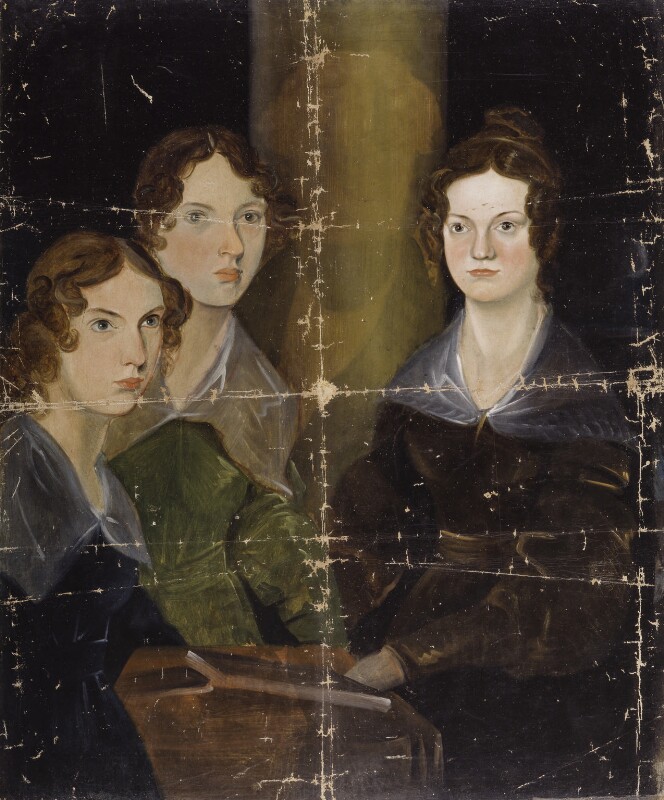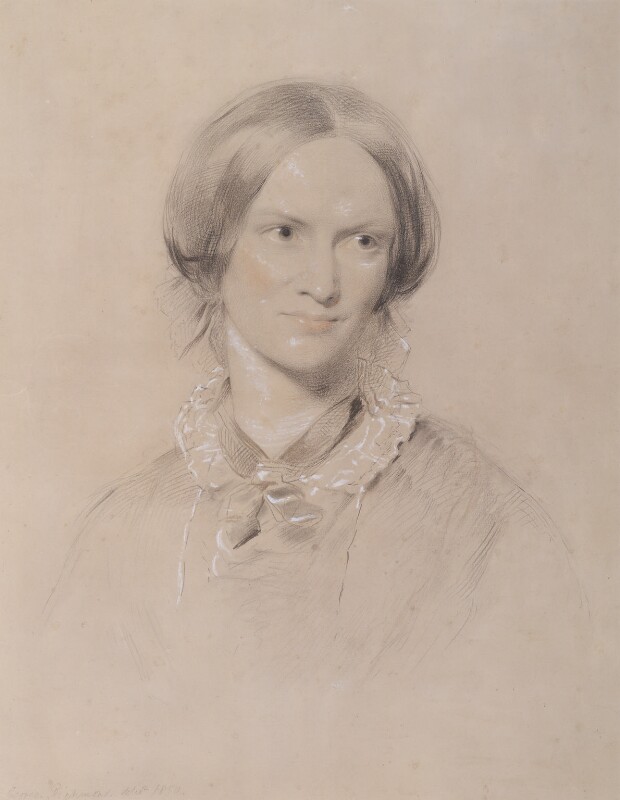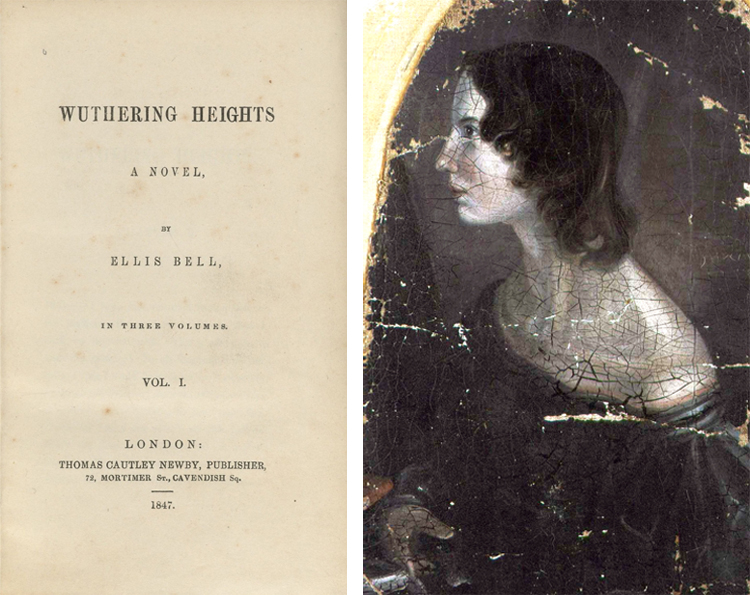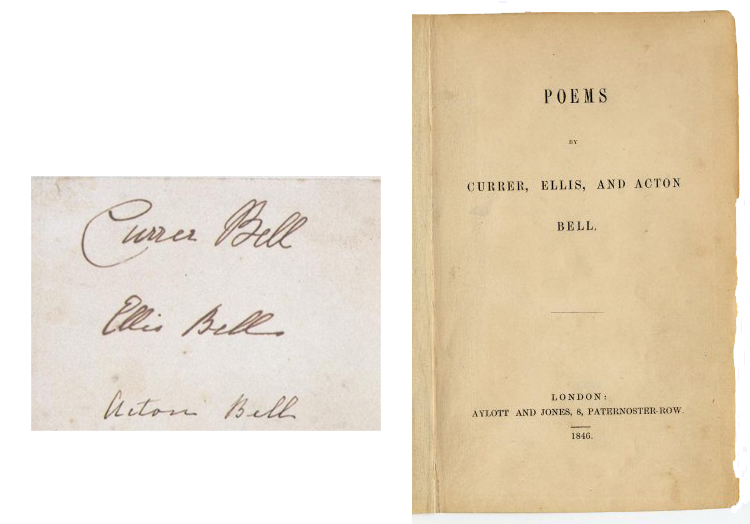
The Brontë sisters Anne, Emily, and Charlotte painted by their brother Patrick Branwell Brontë circa 1834. Branwell originally painted himself in the portrait, but eventually painted over his image. (Photo: National Portrait Gallery, London, CC BY-NC-ND 3.0)
The book Wuthering Heights is a commonly read piece of literature in high school or college. In fact, the novel is one of the few works by female writers that is typically assigned in literature courses covering the canon of Western literature. To say the canonical works skew male is an understatement. However, three sisters in 19th-century England managed to bust their way into the male-dominated world of publishing. The Brontë sisters—Charlotte, Emily, and Anne—each penned classics that are still read today. Three fascinating lives lie behind their published works. Discover who these pioneering women were, and you might even want to read Wuthering Heights again.
The Brontës, A Family of Writers

The Brontë Parsonage Museum in Haworth, Yorkshire, England. (Photo: DeFacto via Wikimedia Commons, CC BY-SA 4.0)
The Brontë family was a well-educated and talented family, although not particularly high class. The father, Patrick Brontë, was a clergyman in the Church of England. He was stationed at the village of Haworth on the Yorshire moors which would come to feature heavily in Wuthering Heights. Of the six children in the family, only four lived to adulthood. Widowed when his children were young, he was by all accounts a rather eccentric and impoverished, albeit loving, father.
The children were well educated both at school and at home. However, the girls had to work to help support the family once they were old enough. All three at some point worked as governesses and teachers, a job that all of them generally disliked. The sisters would eventually return to the family parsonage in Haworth—which is now a museum in their honor. Their brother, Patrick Branwell Brontë, was a painter and poet. Charlotte and Emily too were both talented artists, as can be seen in their surviving sketches and watercolors. Unfortunately, Branwell—the second oldest sibling—struggled with drug and alcohol use which hampered his creative pursuits. All four Brontë siblings would die tragically young.
Charlotte Brontë

“Charlotte Brontë,” by George Richmond in
chalk, 1850, NPG 1452. (Photo: © National Portrait Gallery, London, CC BY-NC-ND 3.0)
Born in 1816, Charlotte Brontë was the eldest of the family's surviving children. She started writing poetry early on in life. With her siblings (whom she helped educate), she was left to indulge in imagination and craft while their father was occupied elsewhere. Charlotte showed her early works to England's Poet Laureate in 1836, Robert Southey. Southey wrote her that, despite her talent, “literature cannot be the business of a woman’s life and it ought not to be.”
Charlotte did not take this advice. Instead, she began writing novels. Her first work, The Professor, did not appeal to publishers. Jane Eyre, her second attempt, was a different story. The novel was published in 1847 under the name Currer Bell. The sisters used pseudonyms until 1848, as it was much easier to be published and have one's work taken seriously with a male name. The novel was billed as a fictional “autobiography.” Critics have concluded that Charlotte drew from her own experiences as a governess to write her main heroine, who works in Mr. Rochester's house.
Jane Eyre was a radical Bildungsroman—first-person story following the thoughts and growth of Jane. The author's focus on the private conscious of her main character was foundational to a genre that would later be built on by the likes of Virginia Woolf. In 1925, Woolf commented, “As we open Jane Eyre once more we cannot stifle the suspicion that we shall find her world of imagination as antiquated, mid-Victorian, and out of date as the parsonage on the moor…So we open Jane Eyre; and in two pages every doubt is swept clean from our minds.” A romance with proto-feminist themes, Jane Eyre has received countless adaptations on stage and screen.
In addition to her poetry, Charlotte wrote two further novels published in 1849 and 1853. Charlotte married Arthur Bell Nicholls, but in 1855 passed away while pregnant with their first child. At the time it was thought tuberculosis caused her death, but modern opinions differ. In 1857, the novelist Elizabeth Gaskell wrote a biography of Charlotte entitled The Life of Charlotte Brontë. The biography firmly established Charlotte as an important author to be remembered.
Emily Brontë

Left: “Wuthering Heights,” by Emily Brontë, title page from 1847 with pen name Ellis Bell. (Photo: Wikimedia Commons, Public domain)
Right: Painting by Patrick Branwell Brontë of what may be Emily Brontë. The painting is a subject of dispute over whether Emily or Anne is depicted. (Photo: Wikimedia Commons, Public domain)
Emily Brontë—the middle sister of the surviving Brontë children—grew up to teach, much as Charlotte had. However, she reportedly detested the profession and was reputed to be a rather odd, reclusive character. The sisters lived much of their life in the parsonage. According to a later letter by Charlotte addressing why they did not hire new household help: “Emily does the baking and attends to the kitchen. We are such odd animals that we prefer this mode of contrivance to having a new face among us.” Charlotte also once described her shy sister's “secret power and fire.”
Emily's writings were initially published under the name Ellis Bell. She joined her sisters in publishing a collective volume of poetry in 1846. In 1847, she published her first and only novel, Wuthering Heights. The tale, told by a narrating housekeeper, is a romance which trends towards violence, madness, or passion—depending on the page. The moors on which the novel is set are reminiscent of the sisters' home surroundings. While the novel shocked, disturbed, and confused some upon its release, it has been a staple of the English-language canon ever since.
Less is know about Emily than is about her elder sister. She and her younger sibling Anne created their own world named Gondal about which Emily wrote poems. Perhaps other works would have flowed from her pen, but Emily passed away at 30 years old, only one year after the publication of Wuthering Heights. She contracted tuberculosis only a couple months after her brother Branwell in late 1848. Despite her sadly short life, handwritten poems by the reclusive author are incredibly coveted by collectors and libraries.
Anne Brontë

Upper Left: Watercolor of Anne Brontë by her sister Charlotte, 1834. (Photo: Wikimedia Commons, Public domain)
Lower Left: Anne Brontë in a pencil sketch by Charlotte, 1845. (Photo: Wikimedia Commons, Public domain)
Right: The title page of the first edition of “The Tenant of Wildfell Hall,” by Anne Brontë (aka Acton Bell), 1848. (Photo: Wikimedia Commons, Public domain)
Anne Brontë—the youngest of the siblings—was as imaginative a child as the rest. She and Emily were particularly close. Like her sisters, she served as a governess for a wealthy family. She had a miserable time with spoiled children and overly indulgent parents. But, like Charlotte with Jane Eyre, Anne found literary inspiration in the worst chapters of her employment. Agnes Gray was published as a volume adjoined to Emily's Wuthering Heights in 1847. The main character Agnes is a governess, much like the author Acton Bell (secretly Anne).
About six months after Agnes Gray, Anne's The Tenant of Wildfell Hall was published. The book follows a single, artist mother. It is later revealed that she flees an abusive husband. Later critics have pointed out the many ways the book subverted the norms expected of wives and mothers at the time. It made a splash, with critics complimenting the writer's skill but drawing connections to Jane Eyre and Wuthering Heights based on the oft uncomfortable, even devastating subject matter and relationships portrayed.
Critics still believed the author of all Bell novels to be men (some thought one man with three names). One wrote of Anne's work, “There is nothing kindly in [this] author's powerful mind.” Another commented, “[No] woman could have written such a work.” “Brutal” and “coarse” were words often used by critics describing the sisters' works. Some praised the unflinching descriptions of humanity's worst impulses. Others found them too unforgiving. In the century and a half since, however, many have described the works as examples of early feminism—subversive in their very style.
Anne passed away young, much like Emily. At 29 she contracted tuberculosis and died after a prolonged illness in 1849.
Lasting Legacy
The only surviving sibling, Charlotte, was left alone at only 33 years old. Charlotte was a guiding hand in shaping the family legacy. It is now thought that she began sanitizing the sisters' image by editing Agnes Gray, preventing the republication of The Tenant of Wildfell Hall, and providing details of the family's life to the biographer and writer Elizabeth Gaskell. Several years later, Charlotte married Arthur Bell Nicholls, the curate at her father's parsonage. A year later, she passed away during her first pregnancy of what may have been tuberculosis or malnourishment brought on by extreme morning sickness. Charlotte was 38 years old.
The short, yet fascinating lives of the Brontë sisters are still a matter of fascination and their written works remain among the must-reads of classic Western literature. The three shy, strange sisters were confident in their talent for writing—and that confidence carried them to a literary status few women achieved in their day.
Today, there are many adaptations of their works. Namely, there have been many feature films and mini series of each of their works—including Jane Eyre (1943, 1996, and 2011 films as well as multiple TV movies), Wuthering Heights (1939, 1992, and 2011 films), and The Tenant of Wildfell Hall (1996 TV mini series).

Left: The pseudonyms of the sisters signed in their own hands. (Photo: Wikimedia Commons, Public domain)
Right: Title page from the 1846 first edition of “Poems” by Currer, Ellis, and Acton Bell (the sisters). (Photo: Wikimedia Commons, Public domain)
Related Articles:
Get To Know F. Scott Fitzgerald, the Legendary Author Responsible for ‘The Great Gatsby’
10 Facts About Jane Austen, the Beloved ‘Pride and Prejudice’ Author
5 “Curiouser and Curiouser” Facts About Fanciful Writer Lewis Carroll/a>
20+ Creative Gifts for Writers That Are Way Better Than an Ordinary Notebook and Pen






















































































